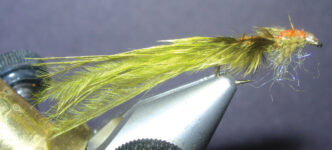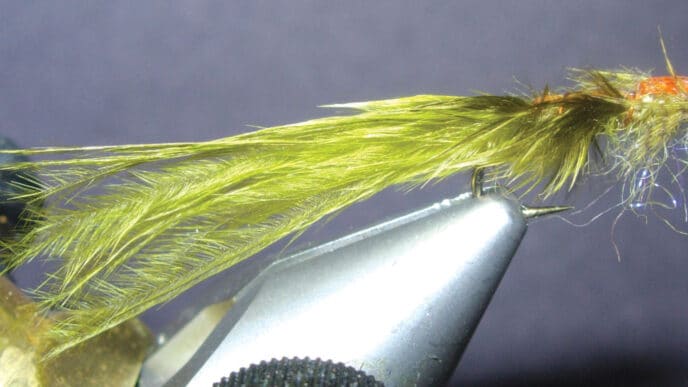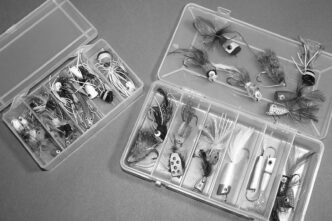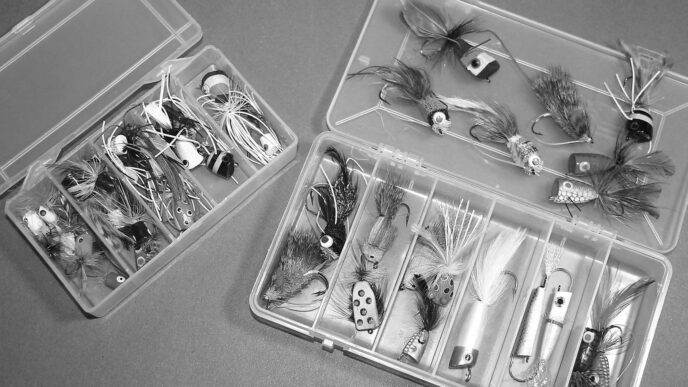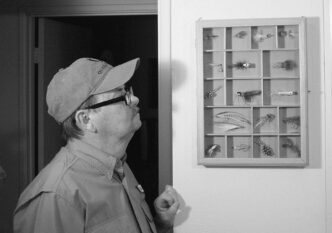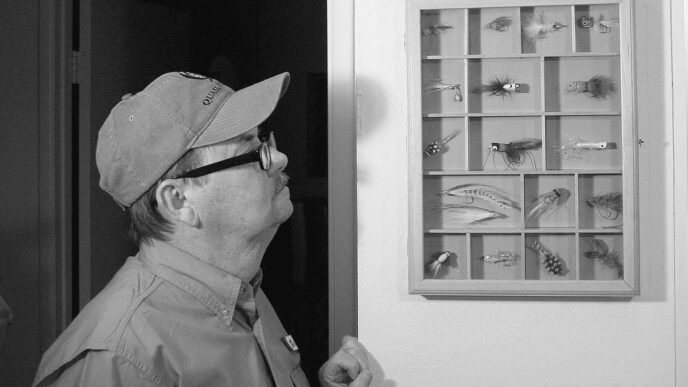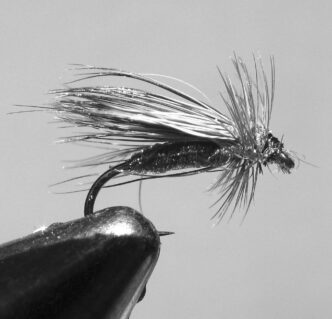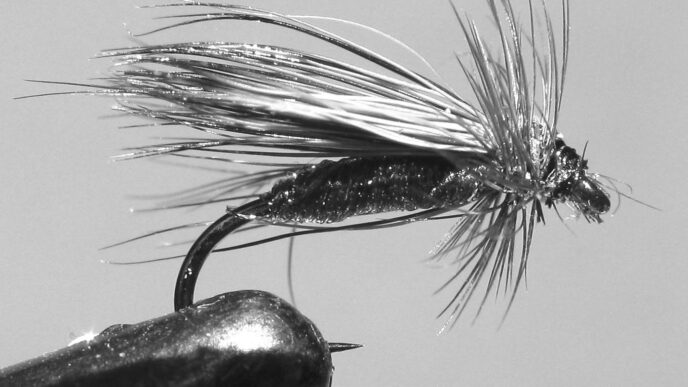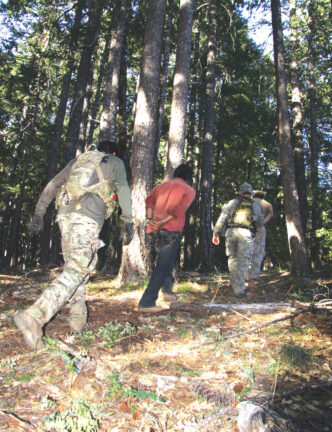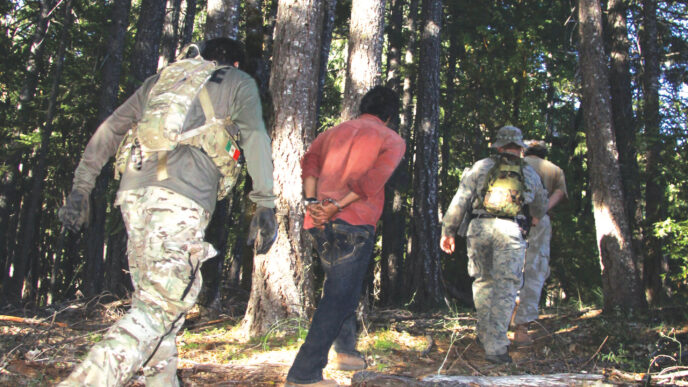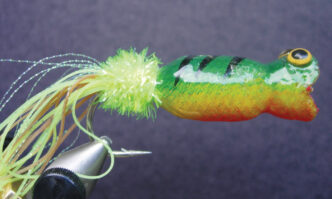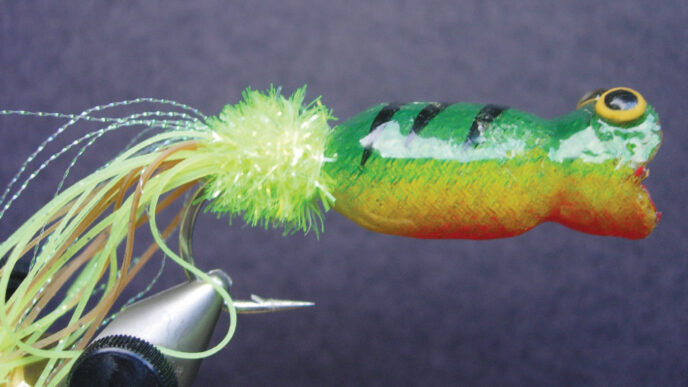A month or so ago, a friend of mine and I spent three days fishing some tiny Sierra streams, some of them accessible by Forest Service dirt roads, some requiring a bit of a hike. You know the kind of water I’m talking about . . . fifteen feet across at some points, small enough to cross in one step in others, flowing through everything from high-country meadows, to stands of pine laced with blow-downs, to swampy runs clogged up by the willows that grow after beavers drop the trees, all filled with mostly tiny trout. Unless you’re close to the highway, you rarely see another soul, much less another angler. My friend Pietro, who makes a habit of these waters and frequently fishes alone, told me, “You know, if I were up here by myself, I’d carry my EPIRB. [That’s an emergency position indicating radio beacon.] There’s no cell phone signal anywhere near, and if I fall and break and ankle or leg, I can activate it and have chance of being found.”
Makes sense. And it got me thinking about the unusual things we carry when angling. Sometimes they’re critical to the fishing, other times they’re whimsical or idiosyncratic choices. My necessaries include one of those plastic U-shaped boot pullers: the kind you step on with one foot while trapping your boot in the other, to help pull it off your foot. And then there’s my father’s fishing license from 1949, a way to stay connected with the guy who started me fishing. I misplaced it when I moved back to California, but I think about it every time I put gear together. It’ll turn up, and it’ll get clipped to my vest when it does.
Figuring that other folks have critical gear choices of their own, I queried some angling friends and colleagues about what — apart from the usual rod, reel, wader, and hat list — they feel they can’t do without. Here are their responses. You’ll likely want to ignore a few of them . . .
Andrew Harris, fly-fishing guide
As blessed as we are in California with a great diversity of rivers, most of them are not all that easy to wade. A wading staff can greatly increase the amount of water you can safely fish. If you have plenty of room, a stout old ski pole or brook stick on a lanyard works great. For the sake of portability, I really like the Simms wading staff, which folds into four sections that fit in a neoprene holster. It’s sturdy, has a great spring-loaded retractor, and makes you look like you’re packing a large scabbard, which is pretty cool!
Bill Carnazzo, fly-fishing guide and contributing editor, California Fly Fisher
A surprisingly useful item I carry is a toothpick. No, I don’t pick my teeth in the riffles. But I do use a toothpick to pick apart tangles, bad-casting knots, and the assorted other faux pas we inflict on our leaders and tippets.
Chip O’Brien, contributing editor, California Fly Fisher
It cost me $119 to learn the value of carrying a strong magnet in my fishing vest. It’s very easy to drop tiny hooks from a fly-tying table, and I apparently had missed the one that ended up in my toddler’s toe. He screamed bloody murder when I tried to remove it, and the emergency room visit cost me $119 for the two minutes it took to yank it out. Sometime after that, when I was fishing, a gust of wind blew several dozen dry flies out of my box onto the ground around me. In both cases, a good magnet could have made all the difference.
Craig Nielsen, fly-fishing guide
In the Mount Shasta area, we enjoy some of the most challenging wading on the planet. Rivers including the Pit, McCloud, and upper Sacramento are located in canyons with steep gradients and strong currents, which, combined with bowlingball-sized slippery rocks, make wading staffs an essential item. Ron Hart’s Riverstalker wading staff is a local favorite among Mount Shasta area guides. It’s inexpensive, sturdy, relatively quiet, and very durable, but does not collapse. Ron is also a great guy, a superb guide, and it feels good to support him.
Dave Sellers, angling writer and artist
The foundation of most of the saltwater fly-fishing tactics that I employ is making long casts, often with large or heavy flies. The target is often powerful fish capable of fast runs. Critical to this type of fishing is good finger protection. During days of hot fishing in the salt, the fingers can soften with exposure to the water. It takes only one strong fish to bring the line tight to the stripping finger, and with friction as the source, painful line burns can result. One burn can end your enjoyment of stripping the line in and possible ruin your fishing day. Preventing this in the first place is easy with the various Lycra finger guards available today.
Frank Pisciotta, fly-fishing guide
Years ago, I started using knee pads when I wet wade the big Truckee River and while bushwhacking and crawling along some of the small, no-name creeks around Truckee for the numerous 5-to-9inch brookies and rainbows and occasional hog of 12 inches that inhabit these small streams. The pads have saved me from suffering seriously cracked knee caps or contusions when a knee gets bashed or I fall heavily onto granite boulders or, worse yet, volcanic rock, with all its sharp edges.
James Babb, editor, Gray’s Sporting Journal
Six years ago, I first stuck my feet in a pair of Crocs, and except for waders and winter boots, I’ve rarely worn anything since. Yes, they’re butt-ugly plastic clogs favored by chefs, nurses, and 12-year-old girls, but they’re also the most comfortable shoes you’ll ever wear, weigh nothing, cost next to nothing, stick to boat decks like glue, don’t absorb water or odors, and nestle unnoticed in your day pack for when the waders come off. Sure, Crocs make you look totally dorkoid, but have you ever seen yourself in waders?
Jeff Solis, fly-fishing guide
Cold beer always tastes better at the end of a fishing day. I think it’s because I’m with my good buddies, discussing the day’s adventure, while sipping on a cold one.
Beer is a must-have on any fishing excursion. However, it’s the type of beer that is most important to me. There are great beers from around the world: Belican beer from Belize, Kalik from the Bahamas, and Pacifico from Mexico come to mind. But, the beer I never leave home without is Coors Light. Oh sure, go ahead and laugh — but when you drink as much as I do, you can’t afford to be bloated on heavy beer while chasing roosterfish up and down the beach!
Joe Healy, associate publisher, Fly Rod & Reel magazine
I’ve come to adore my Folstaf wading staff. Really, you don’t have to take that as weird. This thing has saved me several times — saves of the “Halleluiah!” variety. Though I consider myself fairly young and spry, even while clomping around in wading boots, I don’t go it alone these days. The rubber-bottomed wading boots, in particular, can yield their grip on rocks, and I’ve found it more critical than in the past to have a third leg with me in the form of a wading staff. It breaks down to belt-holster size, so on land, I don’t have to drag it behind me or get frustrated by it snagging in scrub, the way landing nets always do. Now if they could develop a hollow handle that would work as a flask . . . for after-wading enjoyment only, of course.
Ken Hanley, contributing editor, California Fly Fisher
It’s been a great adventure so far with plenty of meanders in the river and waves pounding salty shores. Geez, I hate to admit it now, but I can’t do without reading glasses. No specs means being able to say truly that a size 2/0 hook is a tiny hook. As for top-water action — what’s the point if I can’t see a damn thing anyway!
Mikey Wier, fly-fishing video producer
When I’m out fishing, I can’t live without my hemostats. I use them all the time. For the past couple of years, I’ve been using the ones that also have a cutter blade incorporated. Right now, I’m using a pair made by William Joseph. They are always within reach while I’m out on the water. That pair of hemos with the cutter and hook-eye cleaner is the only real tool I absolutely need while fishing. I use them to cut my tag ends of line, to pinch on and off weights, to pinch the barbs on flies, and sometimes even to hold a really tiny fly while I tie it on the line. I also occasionally use the hook-eye cleaner to rid a shopbought fly of glue in the eye. They are also handy for extracting a fly that a fish took deep or out of the mouth of a toothy fish.
Nelson Ishiyama, Henry’s Fork Lodge
If you use fluorocarbon tippet or leaders, you have a special responsibility to dispose of the bits and strands you cut off. Fluoro doesn’t degrade like other materials, so the leftovers you drop on the ground will be there when your grandchildren fish. Cramming coils of used tippet in your pocket usually means ends hanging out all over. The Monomaster is a simple device to take care of those leftovers. It’s a small cylinder with a lengthwise slit and a roller inside covered with grabby nylon stubs. You stick the end of the tippet into the slot, turn a handle attached to the roller, and your tippet strand disappears into the cylinder. The whole device is about three inches long and an inch in diameter and can hang from your vest. After it’s full, you open it up, cut away the rolled-up tippet, and start over.
Nick Curcione, angling writer
Maybe it’s a sign of increasing age, but a device that most never think about until the moment arrives is a container for answering the call of nature. Zippered waders are fine when wade fishing, but what do you do when you’re in a boat or a plane and it’s inappropriate to just go over the side? One time in Alaska, I actually had to open the plane door while in the air, straddle the pontoon strut, and answer the call. I heard somewhere that they have such devices for small-plane pilots. Now I don’t leave the dock without a pee can.
Peter Pumphrey, angling writer
I do most of my fishing with my wife, so I often need to pack along a good dose of humility for the way too many times she outfishes me. Most of our fishing is done in the backcountry, or at least a mile or so from the parking area, so my equipment tastes tend toward a minimalist perspective. No matter where I am, I always have my neck lanyard. This allows me to carry almost everything I need around my neck: nippers, forceps, tippet spools, dry shake in a little pouch, leader straightener, and an emergency whistle. I leave my lanyard by the door so I can grab a fly box and an extra leader and be on my way. It is also light and easy to carry in a day pack. My first lanyard was homemade and looked it. The current model is a commercial product.
Rachel Andras, fly-fishing instructor and travel sales specialist
I typically like to share my fishing gear. I loan fly rods, give flies away, and hand out tippet to total strangers, but I do not let even my loving husband use my Dr. Slick scissors/pliers. I’ve lost them twice now in the last 10 years and found them each time. I keep threatening to paint them pink so I can find them the next time I drop them on the ground or in the water.
Ralph Cutter, fly-fishing instructor and contributing editor, California Fly Fisher
I always carry my wife with me. She doesn’t eat much or take up much room, but she’s quite handy to have around. She carries a purse, which is perfect for my sunglasses, keys, and wallet. She always has a supply of Chapstick, sunscreen, and toilet paper, which I refuse to carry, but do use on occasion. She will often catch fish when I can’t, which is useful when I need to illustrate an article. She can also use a camera so I can pretend I caught the fish.
Richard Alden Bean, associate editor, California Fly Fisher
Now that I am firmly in the geezer stage of my fly-fishing life, my “can’t do without” item is a visual aid. For several years now, I’ve worn a magnifier on my fishing hat to let me see clearly a 6X tippet being inserted into the hook eye of a size 18 or smaller fly. There are several on the market of varying quality. After trying most, I’ve settled on Hat Eyes, which is the only one with both replaceable lenses and a stainless steel clip.
Rob Ketley, contributing editor, California Fly Fisher
Most of my surf fly fishing occurs during periods of low light. Sunglasses (even those with a light tint) are almost useless at these times. I always wear a pair of inexpensive, clear-plastic safety glasses that allow me to see clearly and also keep nasty stuff such as sand and hooks out my eyes.
Scott Sadil, angling writer
Somewhere in his many books, Roderick Haig-Brown states that whenever we can name a thing in nature — a tree, say, or a bird or flower — we’re somehow enlarged by our knowledge, somehow a bigger part of this vast, mysterious, and finally unknowable world. I suspect my paraphrase is rife with editorial bias — but it helps explain why, when fishing, I nearly always keep near at hand A Field Guide to Western Birds, Roger Tory Peterson’s superior aid to identifying our feathered friends.
Seth Norman, associate editor, California Fly Fisher
I wish I could recall who wrote this advice, but the idea resonated because of a disaster I’d just heard about, so — for me, and for any angler past or approaching 50: two baby aspirin. These will also take the edge off a headache, but . . . I don’t mean to preach, although I don’t mind: Fishing usually puts us way out of reach of treatment during that “golden hour” critical for treating heart attacks. I don’t know that these babies will save the day; from what I read, though, they might. To avoid the need to lick aspirin crumbs, lint, and microshot from a vest pocket, I keep the pills in a crushproof and waterproof container. You might want to make them part of a small medical kit, but if you’re anything like me, contemplating putting that together will shove this in a “to-do-someday” category. Instead, pop a couple right now into a compartment fly box. When next you spot a sturdy box or tube, transfer them there.
Ted Leeson, angling writer
No question about it — a pair of hemostats acquired back in 1979 when I was in grad school. They were given to me by a friend, a hard-partying surgical nurse who was born with a silver spoon in her nose and klepto tendencies. She scored them for me from an operating theater at a teaching hospital where, she said, it was distantly possible they’d been used in one of the many transformational procedures involving Michael Jackson. They’re precise and delicate, but unbelievably strong. I suspect they cost more than my best fly rod, in unadjusted dollars.
Trent Pridemore, angling writer
Since June a year ago, the most important item in my vest is a high-quality set of debarbing pliers. I was leading a group from my home club in Grass Valley. In the excitement of getting new anglers on the water, I forgot to debarb my size 18 trailer fly. I was reminded of this when a new and zealous warden motioned for me to exit the stream and present my rod and reel for his inspection. My oversight resulted in a $430 citation.
Zach Matthews, angling writer
In the winter, I do a ton of backcountry hiking to reach out-of-the-way rivers in areas that get closed to road access. That time of year, I always carry a sealed container of StarKist tuna in case I need an emergency meal. I buy the kind with a can of tuna, crackers, and mayonnaise all in a plastic cylinder, which resists crushing and — critically in bear country — accepts and seals the trash when I’m done.
The Note You Leave
Gear is a hindrance, really. I’ve always thought of it as such and therefore usually forget something at home or in the car in my quest to be lighter, faster.
But earlier this month, I spent several nights picking through my fly boxes and backpacking gear as I prepared for an epic excursion on foot through the untamed canyon of the Middle Fork of the Feather River.
After several days of hooking wild trout in a landscape of granite glaciers and waters more shades of green and blue than the human palette can reproduce, I can assure you the most important gear you will need is the pen and paper you leave at home.
On Monday, August 9, at about noon, two friends and I were rescued via helicopter by Butte County’s Search and Rescue team. They spotted us on their third pass through the canyon. We were perched on a granite ledge nearly 1,500 feet above the river, yet another 1,000 impassible feet from the ridge. The pilot completed a dangerous one-skid landing, and before we knew it, we were back at the truck.
Three hours earlier, at 9:00 in the morning, approximately 18 hours after I was scheduled to have arrived home, my wife grabbed a note detailing the who, what, and where of our trip and called the Plumas National Forest Ranger District. The information detailed on that short note allowed Search and Rescue to locate us quickly. This was crucial, given our limited water supply and the intense heat. We fishermen are a stupid lot and often forget the simplest and most mundane of details. Always put in writing where you’re going and when you’ll be back.
Justin Coupe, Producer
Rivers of a Lost Coast





